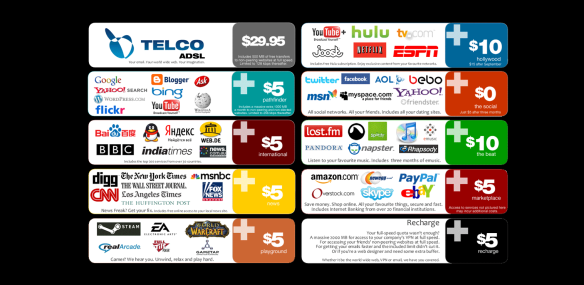
The President recently released a video and statement urging the Federal Communications Commission (FCC) to support net neutrality and ensure that there will be no “pay for play” access to websites or punishment for sites that compete against a provider’s interests. I wholeheartedly support the idea of net neutrality. However, I do like to stand on my Devil’s Advocate soapbox every once in a while. Today, I want to show you why a truly neutral Internet may not be in our best interests.
Lawful Neutral
If the FCC mandates a law that the Internet must remain neutral, it will mean that all traffic must be treated equally. That’s good, right? It means that a provider can’t slow my Netflix stream or make their own webmail service load faster than Google or Yahoo. It also means that the provider can’t legally prioritize packets either.
Think about that for a moment. We, as network and voice engineers, have spent many an hour configuring our networks to be as unfair as possible. Low-latency queues for voice traffic. Weighted fair queues for video and critical applications. Scavenger traffic classes and VLANs for file sharers and other undesirable bulk noise. These plans take weeks to draw up and even longer to implement properly. It helps us make sense out of the chaos in the network.
By mandating a truly neutral net, we are saying that those carefully marked packets can’t escape from the local network with their markings intact. We can’t prioritize voice packets once they escape the edge routers. And if we move applications to the public cloud, we can’t ensure priority access. Legally, the providers will be forced to remark all CoS and DSCP values at the edge and wash their hands of the whole thing.
And what about provider MPLS circuits? If the legally mandated neutral provider is administering your MPLS circuits (as they do in small and medium enterprise), can they copy the DSCP values to the MPLS TE field before forwarding the packet? Where does the law stand on prioritizing private traffic transiting a semi-public link?
Chaotic Neutral
The idea of net neutrality is that no provider should have the right to decide how your traffic should be handled. But providers will extend that idea to say they can’t deal with any kind of marking. They won’t legally be able to offer you differentiated service even if you were wiling to pay for it. That’s the double-edge sword of neutrality.
You can be sure that the providers will already have found a “solution” to the problem. Today, quality of service (QoS) only becomes an issue when the link becomes congested. Packets don’t queue up if there’s bandwidth available to use. So the provider solution is simple. If you need differentiated service, you need to buy a bigger pipe. Over provision your WAN circuits! We can’t guarantee delivery unless you have more bandwidth than you need! Who cares what the packets are marked? Which, of course, leads to a little gem from everyone’s favorite super villain:

Of course, the increased profits from these services will line the pockets of the providers instead of going to build out the infrastructure necessary to support these overbuilt networks. The only way to force providers to pony up the money to build out networks is to make it so expensive to fail that the alternative is better. That requires complex negotiation and penalty-laden, iron-clad service level agreements (SLAs).
The solution to the issue of no prioritized traffic is to provide a list of traffic that should be prioritized. Critical traffic like VoIP should be allowed to be expedited, as the traffic characteristics and protections we afford it make sense. Additionally, traffic destined for a public cloud site that function as internal traffic of a company should be able to be prioritized across the provider network. Tunneling or other forms of traffic protection may be necessary to ensure this doesn’t interfere with other users. Exempt traffic should definitely be the exception, not the rule. And it should never fall on the providers to determine which traffic should be exempted from neutrality rules.
Tom’s Take
Net neutrality is key to the future of society. The Internet can’t function properly if someone else with a vested interest in profits decides how we consume content. It’s like the filter bubble of Google. A blind blanket policy doesn’t do us any good, either. Everyone involved in networking knows there are types of traffic that can be prioritized without having a detrimental effect. We need to make smart decisions about net neutrality and know when to make exceptions. But that power needs to be in the hands of the users and customers. They will make decisions in their best interest. The providers should have the capability to implement the needs of their customers. Only then will the Internet be truly neutral.


Pingback: What Work was Like in the 1960's and 1970's. | Metallicman